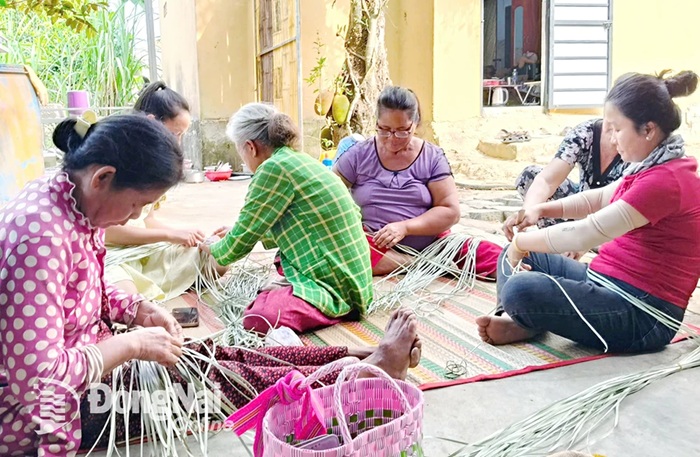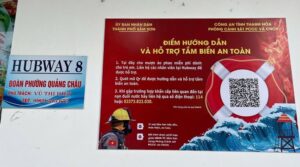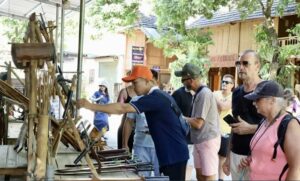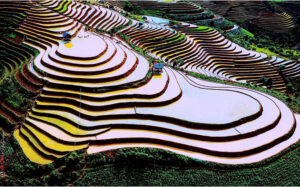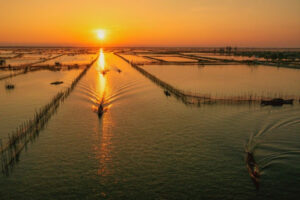Kon Tum province is located in the north of the Central Highlands and on the western side of the Truong Son range. It’s the second smallest province in the Central Highlands, with mountains and plateaus, interspersed with narrow valleys. Kon Tum has a cool climate and attracts tourists with its rugged landscape and the cultures of its indigenous peoples.
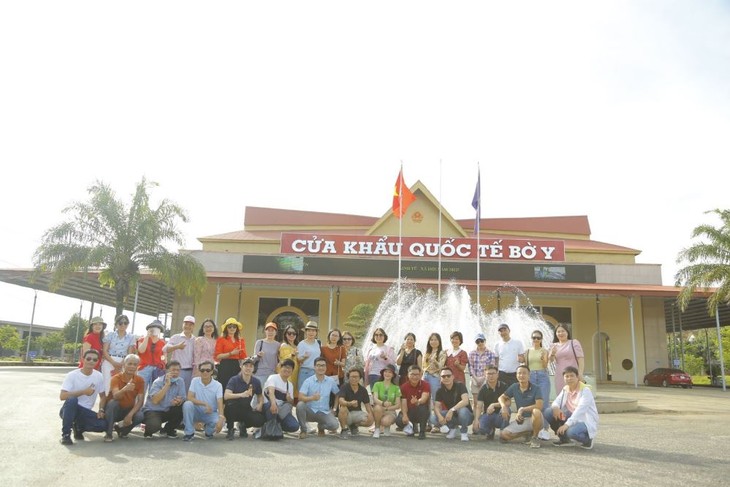
Bo Y border gate is the meeting point of Vietnam, Laos, and Cambodia. Photo: VNA
In the Ba Na language, Kon means village and Tum means lake. Kon Tum is a village near a lake by the Dak Bla river.
Kon Tum has a cool climate all year round with two seasons. The rainy season is from April to November. The dry season runs from December through March. Each season has its own beauty. In January the rubber trees shed their leaves. In March begins the coffee season, when white blossoms cover the farms. November and December is the time when yellow wild sunflowers cover the mountains and hills. It’s also the season of traditional festivals for the Ba Na, Xo Dang, Gie Trieng, and B'rau ethnic groups.
Phan Thi Tu Uyen, a resident of Kon Tum city, said: “The city center has many tourist attractions, such as the Kon Tum Bishop's Office, the Wooden Church, Kon K'lo suspension bridge, and the Kon Jo Dri and Kon K'tu tourist village. Between Kon K'lo suspension bridge and the Wooden Church are the villages of the Ba Na, where tourists can stay overnight in stilt houses, try the local food, and row a standing paddle board on the Dak La river.”
In addition to hundred-year-old architectural landmarks, Kon Tum city also has some interesting spots like the Indochina T-Junction in Bo Y commune, Ngoc Hoi district – the only place in Vietnam where, if a rooster crows, people in Vietnam, Laos, and Cambodia can hear it. The Bo Y international border gate is the meeting point of the three countries.
Other destinations are the H67 military base in Sa Thay district and the Yaly hydroelectric power plant and reservoir. Mang Den township is considered the second Da Lat resort town in the Central Highlands.
Nguyen Duc Doanh, a traveler from Ho Chi Minh City, said: “When I drove to Mang Den, I was impressed by the straight road and the green pine forest on either side. It was very pleasant, very relaxing. I’ve visited 7 lakes, 3 waterfalls, and the statue of Our Lady of Mang Den, and several indigenous communities to explore their culture and customs.”
Visitors enjoy the unique cultures of the local ethnic groups, participate in dancing by a flickering fire to traditional gong melodies, and listen to village elders recite epics of the mountains and forests.
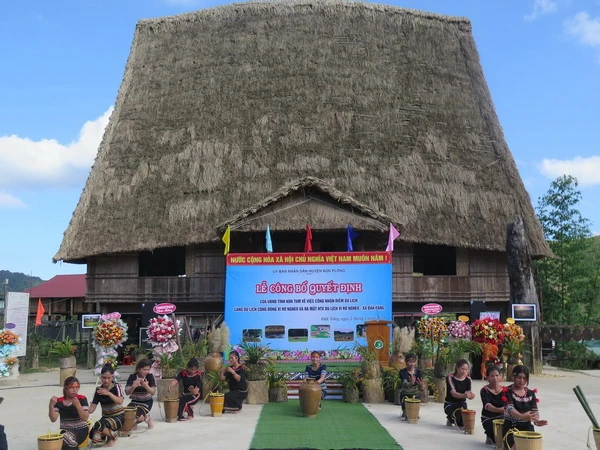
Art performance celebrates the recognition of Vi Ro Ngheo village of the Xo Dang in Kon Plong district as a community tourism village. Photo: Du Toan/VNA
Many villages have combined tourism development and cultural preservation. Kon K'tu village in Dak Ro Wa commune, Kon Pring village in Mang Den town, Dak Rang village in Ngoc Hoi district, and Kon Brap Du village in Kon Ray district have formed gong and Xoang dance troupes to entertain visitors. The local women demonstrate brocade weaving at the communal house and sell textile products. Vi Ro Ngheo village of the Xo Dang in Kon Plong district, recognized as a community tourism village, offers homestay service.
Pham Van Thang, Vice Chairman of the Kon Plong district People's Committee, said: “We have encouraged every household to engage in restoring cultural values. We organize groups of families to grow vegetables and raise poultry. We use home-grown vegetables and animals and catch river fish to cook for guests.”
Its long history, unique ethnic cultures, and amazing natural landscapes have made Kon Tum a popular destination for domestic and foreign tourists.



